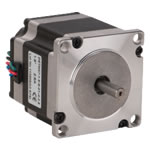(!) Since support from Microsoft will end on January 14th, 2020, Windows 7 will be excluded from the recommended environment from December 15th, 2019 on this site. Vì lý do Microsoft kết thúc hỗ trợ cho Windows 7 vào ngày 14/01/2020, Windows 7 sẽ là hệ điều hành không được khuyến khích sử dụng với trang web này từ ngày 15/12/2019.
Search by Category / Brand Tìm theo danh mục, nhãn hiệu
Search by Category Tìm theo danh mục
- Scheduled Maintenance Notice: This site will be unavailable due to scheduled maintenance from 8:00 to 21:00 (ICT) 29/9/2024. We apologize for the inconvenience.
- [Thông Báo] Xác Nhận Dữ Liệu Người Dùng Web, Phục Vụ Dự Án Hỗ Trợ Chat Qua Zalo OA. Xem chi tiết.
[Announcement] User Data Confirmation for the Chat Support Project via Zalo OA. See more.
Stepping Motors(Type Details:Built-in Driver)
Brand |
|
|---|---|
| CAD |
|
| Days to Ship |
|
1 itemsMặt hàng
- Sort By
-
You can add up to 6 items per a category to the compare list.

42/57 Series High Torque Hybrid Type Stepper Motor With an Integrated Step Angle of 1.8
FULLING MOTOR
- 42/57 Series High Torque Hybrid Type Stepper Motor with 1.8° step angle from FULLING MOTOR - Step angle: 1.8° - Step angle accuracy: ± 5% (full step, no load) - Resistance accuracy: ± 10% (20℃) - Inductance accuracy: ± 20% (1kHz) - Temperature Rise: 80℃ Max. - Ambient Temperature: -20℃~+50℃ - Insulation Resistance: 100MΩ Min. ,500VDC - Dielectric Strength: 500VAC for one minute - Max. radial force: 28N (20mm from the flange) - Max. axial force: 10N
Type Details Square Flange Size A(mm) Power Supply Voltage Specifications Control Method Step Angle(°) Reducer Drive Method Backlash(°) Holding torque (classification)(N·m) Built-in Driver 42 ~ 57 2-phase DC Specification Open Loop 1.8 Not Provided Bipolar - ~0.4 ~ ~1.9 From: 2,287,000 VND Days to Ship: Số ngày giao hàng: 4 Day(s) or more  4 Day(s) or more
4 Day(s) or more
| BrandNhãn hiệu |
|---|
| Product SeriesDòng sản phẩm |
| CADCAD |
| From |
| Days to ShipSố ngày giao hàng |
| Type Details |
| Square Flange Size A(mm) |
| Power Supply |
| Voltage Specifications |
| Control Method |
| Step Angle(°) |
| Reducer |
| Drive Method |
| Backlash(°) |
| Holding torque (classification)(N·m) |
You can add up to 6 items per a category to the compare list. | |
| BrandNhãn hiệu | FULLING MOTOR |
| Product SeriesDòng sản phẩm | 42/57 Series High Torque Hybrid Type Stepper Motor With an Integrated Step Angle of 1.8 |
| CADCAD |
|
| From | 2,287,000 VND |
| Days to ShipSố ngày giao hàng | 4 Day(s) or more |
| Type Details | Built-in Driver |
| Square Flange Size A(mm) | 42 ~ 57 |
| Power Supply | 2-phase |
| Voltage Specifications | DC Specification |
| Control Method | Open Loop |
| Step Angle(°) | 1.8 |
| Reducer | Not Provided |
| Drive Method | Bipolar |
| Backlash(°) | - |
| Holding torque (classification)(N·m) | ~0.4 ~ ~1.9 |
Loading...Tải…
ConfigureTạo
Specification/DimensionsĐặc điểm kỹ thuật / Kích thướcĐặc điểm kỹ thuật / Kích thước
-
Type Details
- Motors
- Built-in Driver
- Single Driver
- Single Controller
- Motor Only
- Set
-
Square Flange Size A(mm)
-
Power Supply
-
Voltage Specifications
-
Control Method
- Open Loop
- Closed Loop
-
Step Angle(°)
-
Reducer
- Not Provided
- Provided
-
Drive Method
-
Backlash(°)
-
Holding torque (classification)(N·m)
- 0.1 or Less
- ~0.2
- ~0.3
- ~0.4
- ~0.5
- ~0.6
- ~0.7
- ~0.8
- ~0.9
- ~1
- ~1.1
- ~1.2
- ~1.3
- ~1.4
- ~1.5
- ~1.7
- ~1.8
- ~1.9
- ~2
- ~3
- ~4
- ~5
- ~10
- ~15
- ~20
- ~30
- ~40
- ~60
* -0.2 represents > 0.1/≤ 0.2.
Application example related to this categoryVí dụ ứng dụng liên quan đến danh mục này
Related Categories to Stepping MotorsDanh mục liên quan đến Stepping Motors
FAQ Stepping motor
- Question: For what purposes is a stepping motor typically utilized?
- Answer: Stepping motors are typically utilized in applications that require precise and accurate positioning, such as in robotics, automation systems, CNC machines, telescope mounts, and 3D printing. They are ideal for situations where the motor needs to move in small increments, rather than rotating continuously.
- Question: What are the differences between a stepping motor and a regular motor?
- Answer: The main difference between a stepping motor and a regular motor is that a stepping motor moves in small, precise steps, while a regular motor rotates continuously. Stepping motors are designed to move in discrete steps, making them ideal for applications that require precise positioning, whereas regular motors are designed to rotate continuously, making them ideal for applications that require continuous motion, such as driving a fan or a conveyor belt. Stepping motors also typically have higher torque at low speeds and are more expensive than regular motors.
- Question: Is a stepping motor categorized as AC or DC?
- Answer: Stepping motors can be categorized as either AC or DC depending on the type of motor. Some stepping motors are designed to operate on AC voltage, while others are designed to operate on DC voltage. However, the most common type of stepping motor used in industrial and commercial applications is the bipolar DC stepping motor. This type of motor is designed to operate on DC voltage and is widely used in robotics, automation systems, and other applications that require precise positioning.
- Question: What are some common applications for stepping motors, and what are the advantages of using them in these applications?
- Answer: Some common applications for stepping motors include robotics, automation systems, CNC machines, telescope mounts, and 3D printing. The advantages of using stepping motors in these applications include precise and accurate positioning, excellent repeatability, high torque at low speeds, and the ability to hold a position without power. These advantages make stepping motors ideal for applications that require precise control of movement and positioning.










How can we improve?
How can we improve?
While we are not able to respond directly to comments submitted in this form, the information will be reviewed for future improvement.
Customer Privacy Policy
Thank you for your cooperation.
While we are not able to respond directly to comments submitted in this form, the information will be reviewed for future improvement.
Please use the inquiry form.
Customer Privacy Policy